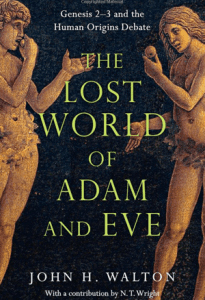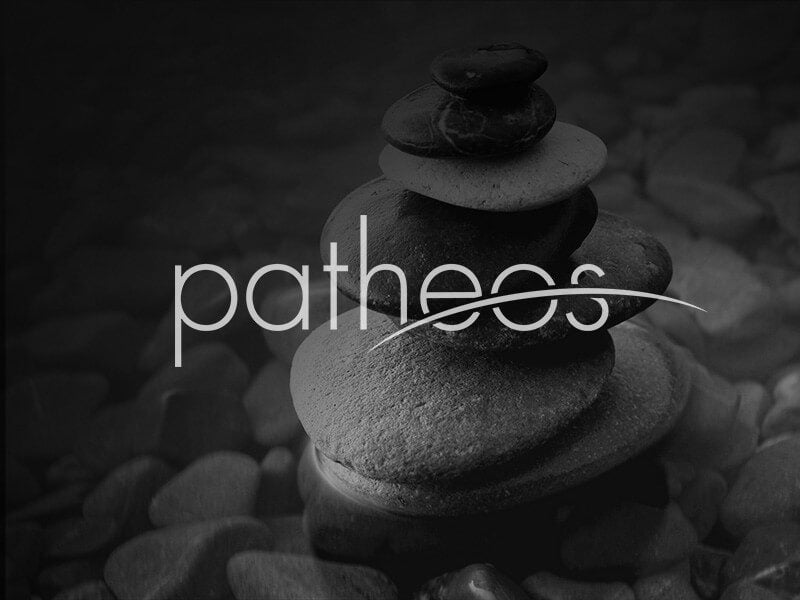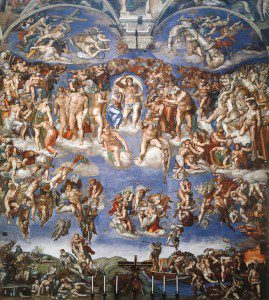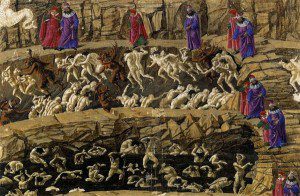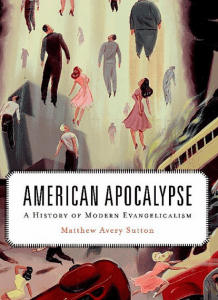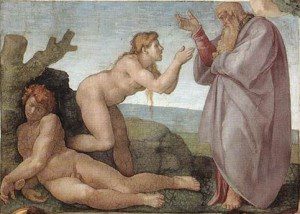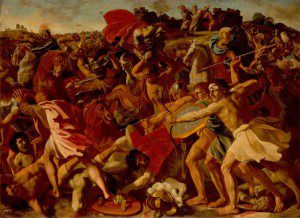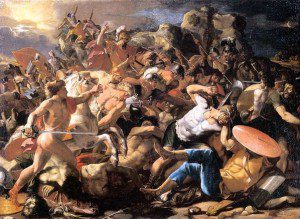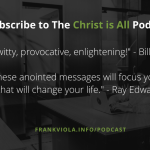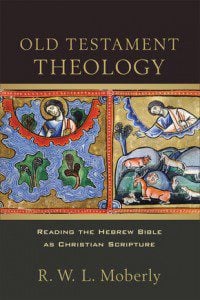 The second chapter of R. W. L. Moberly’s Old Testament Theology: Reading the Hebrew Bible as Christian Scripture turns to an issue that raises many questions about Judaism and Christianity – the status of Israel as a chosen people. Two related, but distinct, questions are raised in this chapter – the first is the exclusive nature of the chosen, and the second is the hērem warfare of Deuteronomy and Joshua. These are both important questions, but the first can (chosen) get lost in the second (war). We will look at the questions in two separate posts.
The second chapter of R. W. L. Moberly’s Old Testament Theology: Reading the Hebrew Bible as Christian Scripture turns to an issue that raises many questions about Judaism and Christianity – the status of Israel as a chosen people. Two related, but distinct, questions are raised in this chapter – the first is the exclusive nature of the chosen, and the second is the hērem warfare of Deuteronomy and Joshua. These are both important questions, but the first can (chosen) get lost in the second (war). We will look at the questions in two separate posts.
The claim that Israel is a chosen people runs through the Old and New Testaments, especially the Old Testament. But this claim of particularity is disturbing for many. To illustrate the tension Moberly quotes Walter Brueggemann from a conversation with Carolyn Sharp:
You know, deep in the night, I think about the whole scandal of particularity: about the chosenness of Israel and the chosenness of Jesus and the chosenness of the Church. It’s kind of chilling to think that that’s how we’ve made our faith claim. I’m haunted by that stuff. (p. 42)
The question of hell is a part of this scandal of particularity. The chosen go to heaven, the rest go to hell, even (according to some) the child enslaved, beaten, used and abused to death. As one not among the chosen hell is a deserved fate. Hell is primarily a New Testament concept, rather than an Old Testament concept, but the scandal or blessing of particularity runs deep through the story.
The election of Israel begins with Genesis 12 when God calls Abram and is made explicit in Deuteronomy 7:
For you are a people holy to the Lord your God. The Lord your God has chosen you out of all the peoples on the face of the earth to be his people, his treasured possession. The Lord did not set his affection on you and choose you because you were more numerous than other peoples, for you were the fewest of all peoples. But it was because the Lord loved you and kept the oath he swore to your ancestors that he brought you out with a mighty hand and redeemed you from the land of slavery, from the power of Pharaoh king of Egypt.
The election of Israel is grounded in a covenant with their ancestors and reflects a faithful love – as we hear in Deuteronomy 10.
To the Lord your God belong the heavens, even the highest heavens, the earth and everything in it. Yet the Lord set his affection on your ancestors and loved them, and he chose you, their descendants, above all the nations—as it is today. Circumcise your hearts, therefore, and do not be stiff-necked any longer.
Moberly reflects on this election of Israel by God and the sense of wonder and devotion to God that it should bring to the people. God’s election of Israel reflects his love of Israel and this is an end in itself. “It is justified in the way that love is justified – and love is its own justification. … Fundamentally, however, love transcends rationalizations.” (p. 46)
Not an Instrumental Election. Christians often view the election of Israel as instrumental – to bring light to the nations and save us all. Moberly quotes Rob Bell and Daniel Block as examples of what he calls canonical or instructive re-readings or misreadings of the texts concerning the election of Israel.
Interestingly both Bell and Block … shy away from YHWH’s election of Israel as an end in and of itself by depicting such a notion pejoratively (“just so they’ll feel good about themselves”; “that he might merely lavish his attention on her as if she were a pet kitten or a china dish on a shelf”). It is curious that they are unable to here articulate the nature of love of one to another as a wondrous good, of value in itself, even though I imagine that they would have no difficulty doing so in other contexts. (p. 48)
God’s love for and election of Israel is not merely instrumental any more than a man’s love for his wife, a woman’s for her husband, or a parent’s for their children is instrumental. Do you really love your spouse simply to bring blessing to the world at large? The image of Israel in the prophets is not a disobedient employee, but an adulterous spouse. Moberly continues:
This may be connected to a failure also to think through the nature of the blessing that Israel is to mediate to others (on the common Christian reading of Genesis 12:3b). For should not reception of that blessing entail a realization on the part of people in other nations that God loves them for themselves? If not, then in what does the blessing consist? Even if that love brings with it a call to serve, that service is a corollary to being loved, not the core of being loved. So too, the Israelites are loved for themselves, prior to any impact for good that they may have on others. (p. 48)
As Christians we are also God’s chosen people, the body and bride of Christ. Is this another instrumental election? Or is it an election of love? Depending on your theology you may believe this election to be universal or not, but it certainly isn’t merely instrumental. Election should inspire wonder and devotion.
Is Election Tribal and Unjust? Moberly notes that the exclusive nature of Israel’s election has come under attack. To some it represents the failing of many religions. To think that one is particularly loved by God is a warrant for abuse and oppression. Put yourself in the place of the Canaanites, the Moabites, the Egyptians or the Philistines. Is the election of Israel just? Moberly brings a number of different scholars troubled by the exclusivity of the election of Israel into the discussion. He quotes David Clines “If you adopt the point of view of the Egyptians or the Canaanites, God is not experienced as a saving God, and the only words you hear addressed to you are words of reproach and threat.” (p. 50) From the point of view of the Native Americans dispossessed from the land or those under colonial rule around the world, the idea of a chosen people and manifest destiny presents a real threat and offers little hope.
Putting aside for the moment the issue of conquest and hērem (we’ll get to it in the next post), Moberly notes that Israel was the under dog, not the top dog. Much of the abuse of the concept of a chosen people comes from those in a position of power, using the Bible in a self-serving manner. This is not the posture found in the Bible. God gives his people victory “when they are small and weak and facing apparently overwhelming odds.” (p. 51)
The particularity of election is not an easy question – perhaps the embodiment of a vocation to be the people of God, if faithful, is a blessing to the nations and a conduit for the blessing of God. God does not shower blessings solely on Israel. Although we are told “Esau I hated,” yet God did bestow blessings on Esau. There is a complexity to the narrative of Scripture, and an underlying expectation that if the other nations did repent and turn to God he would show favor to them as well. (Consider the tale of Jonah for example. Or Ruth the Moabite woman who became the mother of Obed, grandmother of Jesse, great grandmother of David despite the fact that we read in Deuteronomy 23 “no Ammonite or Moabite or any of their descendants may enter the assembly of the Lord, not even in the tenth generation.” ) This isn’t to attempt to poke holes in Scripture, but to note that God welcomed those who turned to him. This included Ruth a Moabite woman listed in the the genealogy of Jesus (Matthew 1).
The Mystery of Grace. Moberly concludes this section on election:
On any reckoning, however, the wonder of being loved is surely not other than the mystery of grace; it is non-negotiable as a fundamental element in Jewish and Christian faiths. … [T]he question of how best one should relate the particular concerns of divine love to universal concerns of divine justice is complex and resists easy answers. For the present, my argument is simply that divine election, insofar as it expresses the mysterious grace of God, is something without which neither Jewish not Christian faiths can survive in recognizable forms. For to lose this would be to lose the particular grace that gives faith its basic meaning and rationale. (p. 52)
The exclusivity of election is troubling, but the mystery of grace and the expansiveness of love inspire awe.
Is election inherently unjust?
Was Israel’s election “merely” instrumental?
Why was Israel chosen by God? What does this mean for election within Christianity?
If you wish to contact me, you may do so at rjs4mail[at]att.net.
If interested you can subscribe to a full text feed of my posts at Musings on Science and Theology.



